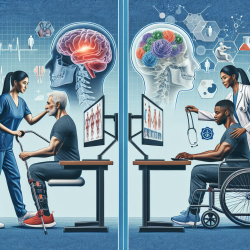Introduction
The integration of cardiac sympathetic decentralization (CSD) and comprehensive psychiatric treatment presents a promising approach to managing anxiety, particularly in patients experiencing recurrent implantable cardioverter defibrillator (ICD) shocks. The study titled "Synergistic application of cardiac sympathetic decentralization and comprehensive psychiatric treatment in the management of anxiety and electrical storm" provides insightful findings that can be instrumental for practitioners aiming to enhance their therapeutic strategies.
Understanding the Research
This research highlights two case studies where a combination of bilateral cardiac sympathetic decentralization (BCSD) and multimodal psychiatric treatment significantly reduced anxiety symptoms in patients with recurrent ICD shocks. The study suggests that this integrative approach can lead to sustained improvements in both physical and psychological well-being.
Key Findings
- Case 1: A 38-year-old male with severe anxiety and panic disorder experienced a significant reduction in symptoms following BCSD and cognitive behavioral therapy (CBT). Over a year, his general anxiety levels dropped by nearly 50%, and panic severity decreased, allowing him to return to normal activities.
- Case 2: A 23-year-old female with a history of syncope and suspected seizure disorder showed marked improvement in anxiety and mood symptoms post-BCSD, with no further ICD shocks detected. This suggests BCSD may positively impact mood and anxiety beyond reducing arrhythmias.
Implications for Practitioners
Practitioners can consider the following strategies based on the study's outcomes:
- Adopt an integrative approach combining BCSD with psychiatric treatments like CBT to address both the physiological and psychological aspects of anxiety.
- Utilize the Shock Catastrophization Scale (SCS) to assess cognitive distortions related to ICD shocks and tailor interventions accordingly.
- Engage in multidisciplinary collaboration to enhance treatment efficacy, ensuring that both cardiac and psychiatric aspects are addressed.
Encouraging Further Research
While the findings are promising, further research is needed to explore the long-term effects of BCSD on anxiety and its potential role in modulating emotional experiences. Practitioners are encouraged to contribute to this growing field by conducting longitudinal studies and exploring the neurophysiological mechanisms underlying these treatments.
Conclusion
The synergistic application of BCSD and psychiatric treatment offers a novel and effective approach to managing anxiety in patients with recurrent ICD shocks. By integrating these methods, practitioners can provide comprehensive care that addresses both the physical and psychological dimensions of anxiety.
To read the original research paper, please follow this link: Synergistic application of cardiac sympathetic decentralization and comprehensive psychiatric treatment in the management of anxiety and electrical storm.










